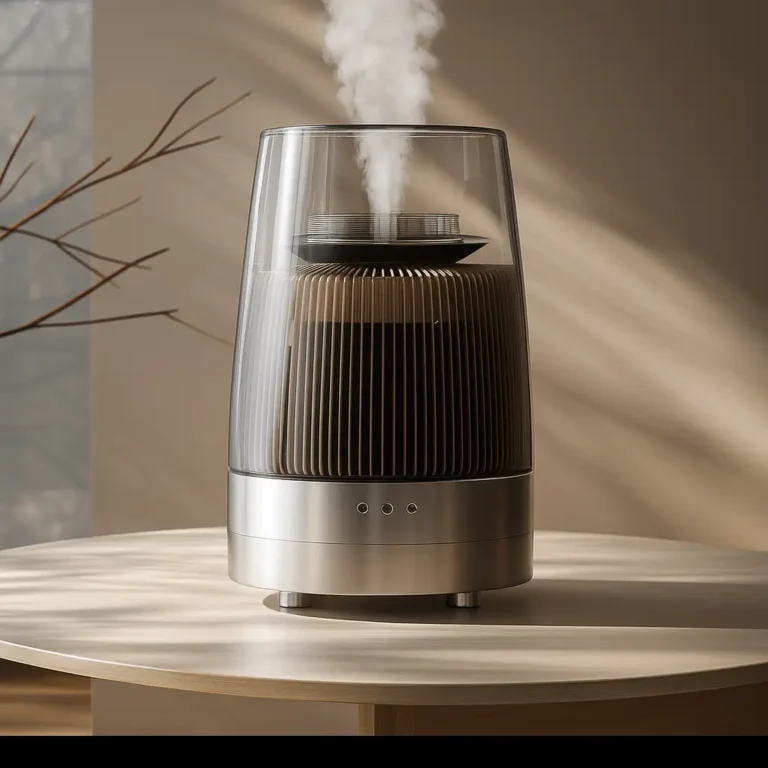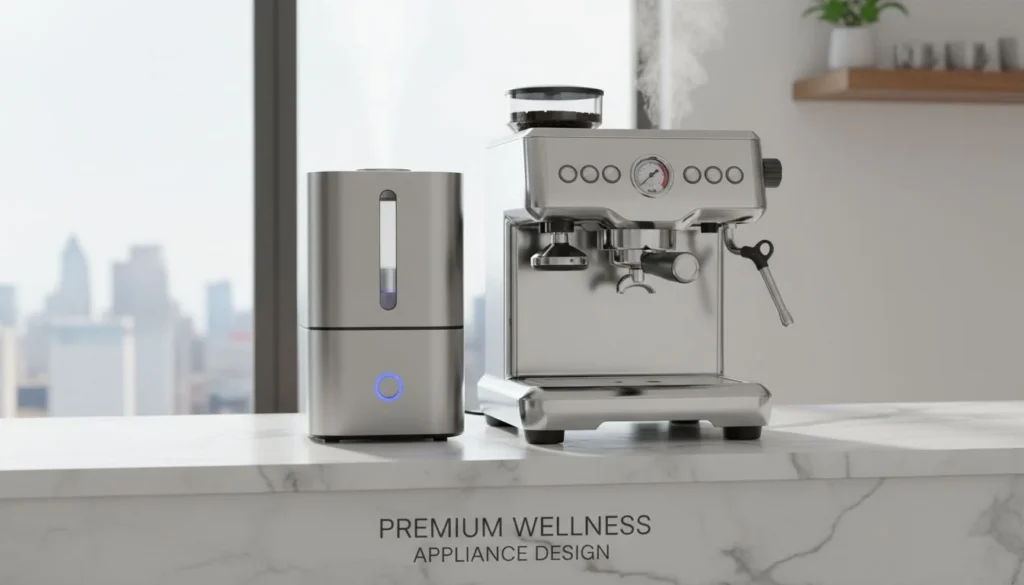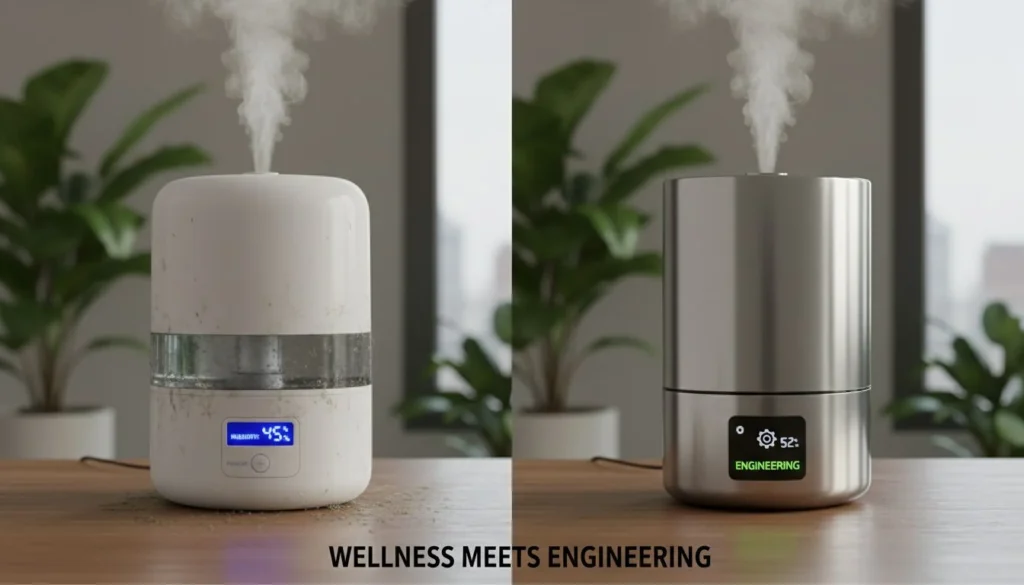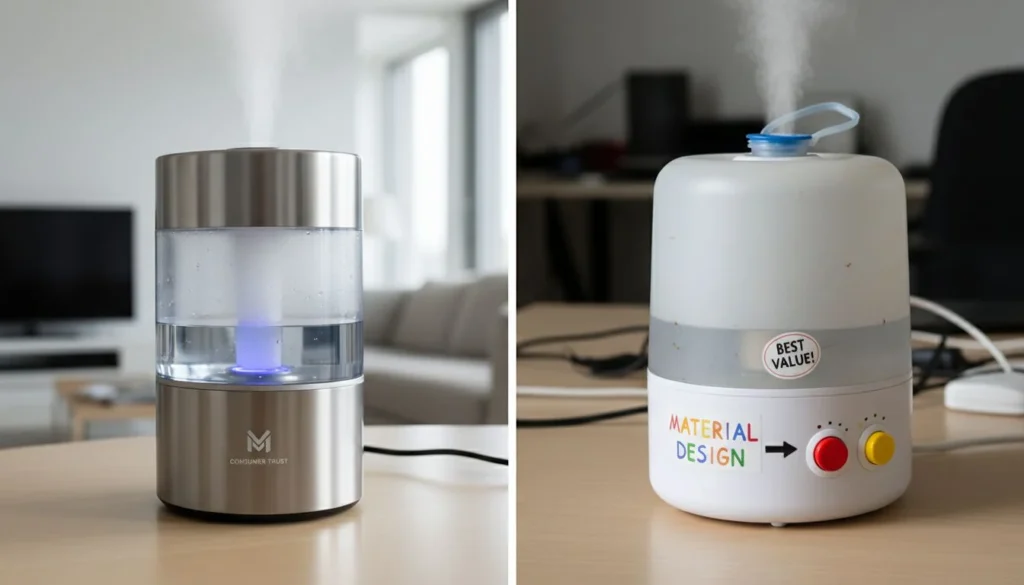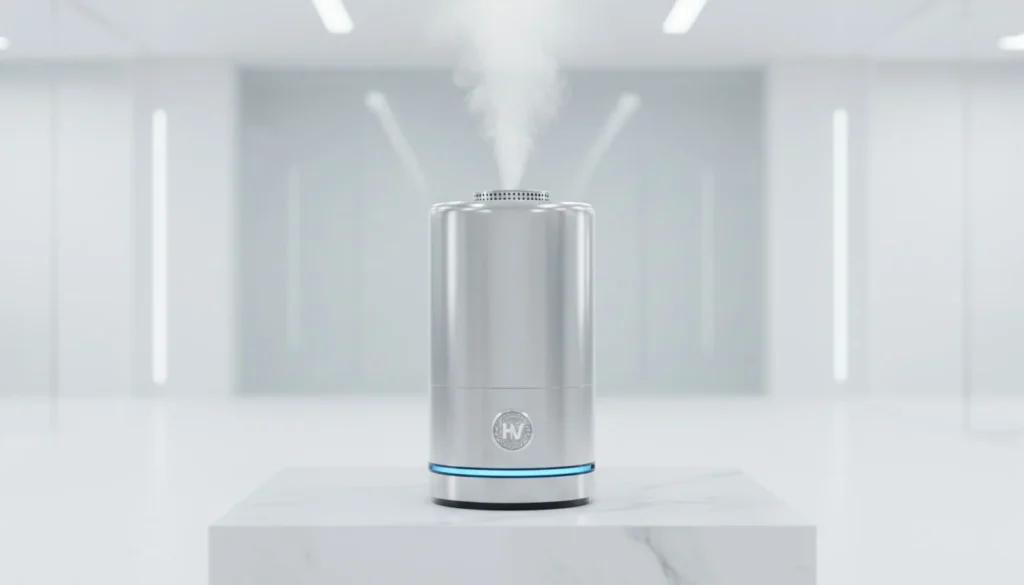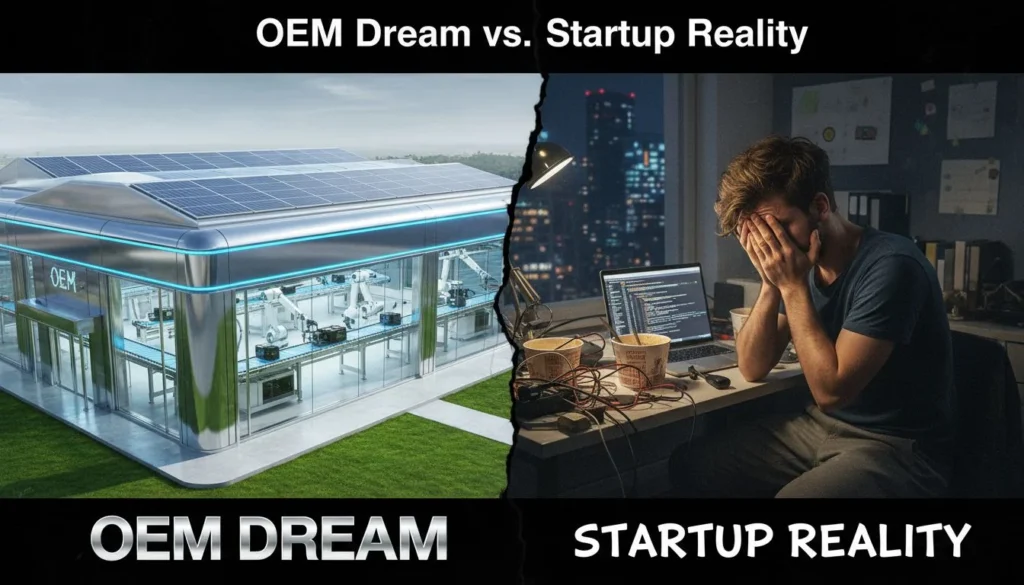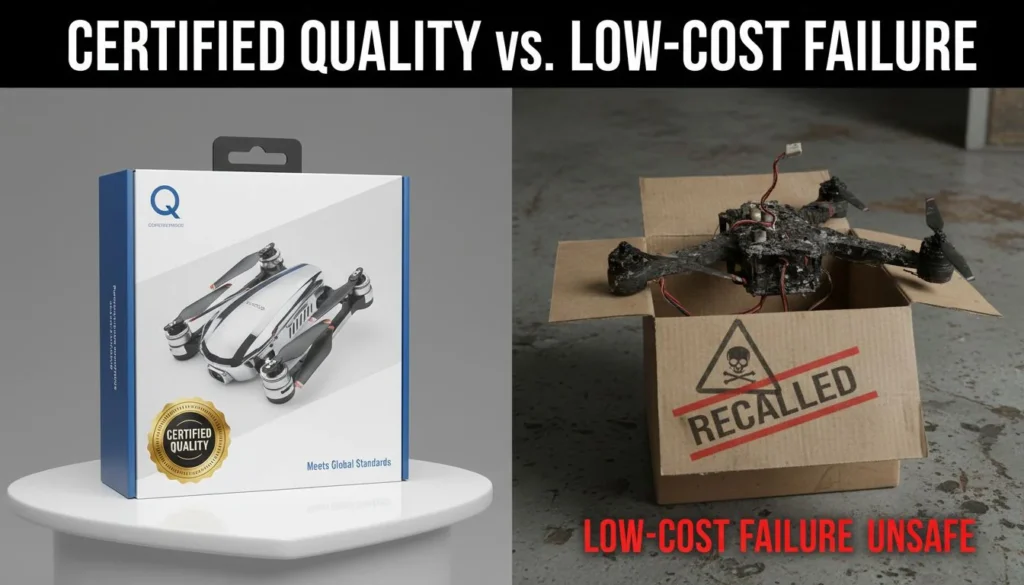
Your brand's standalone air purifiers are good, but the market is changing. Customers now complain about dry air and water quality, seeking more than just particle filtration.
The future of home wellness is not a single device but an integrated system1 combining air purification, humidification, and water filtration. This shift creates a huge opportunity for brands to develop the premium, connected products that consumers are now demanding.

I’ve been in the manufacturing and product development world for a long time. I've seen trends come and go. But this move from single-function appliances to complete wellness systems is different. It’s a real change in what people expect from the products in their homes. For a designer like you, this is a massive opportunity to innovate and lead the market. Let's break down what this trend means for you and how you can build the next generation of wellness products.
Consumers increasingly view home wellness as an interconnected system, not as a collection of separate devices.Vero
Market research from firms like GfK and NPD Group shows a growing trend towards 'environmental wellness,' where consumers seek solutions that manage air, humidity, and water quality in a holistic manner.
All air purifiers on the market now include built-in humidifiers.Falso
While combination air purifier/humidifier units exist, the vast majority of air purifiers are still standalone devices. The trend is moving towards integration, but it is not yet a standard feature across all models.
Is Just Purifying Air No longer Enough for Today's Consumers?
Your air purifier designs are selling, but you see competitors adding new features. The conversation is shifting from just filtering particles to managing the entire environment, including humidity and moisture.
No, it's not enough. Consumers now see wellness holistically. They understand that dry air can be as irritating as dusty air. The new paradigm demands integrated solutions that manage particles, humidity, and even water purity for a complete, healthy home environment.
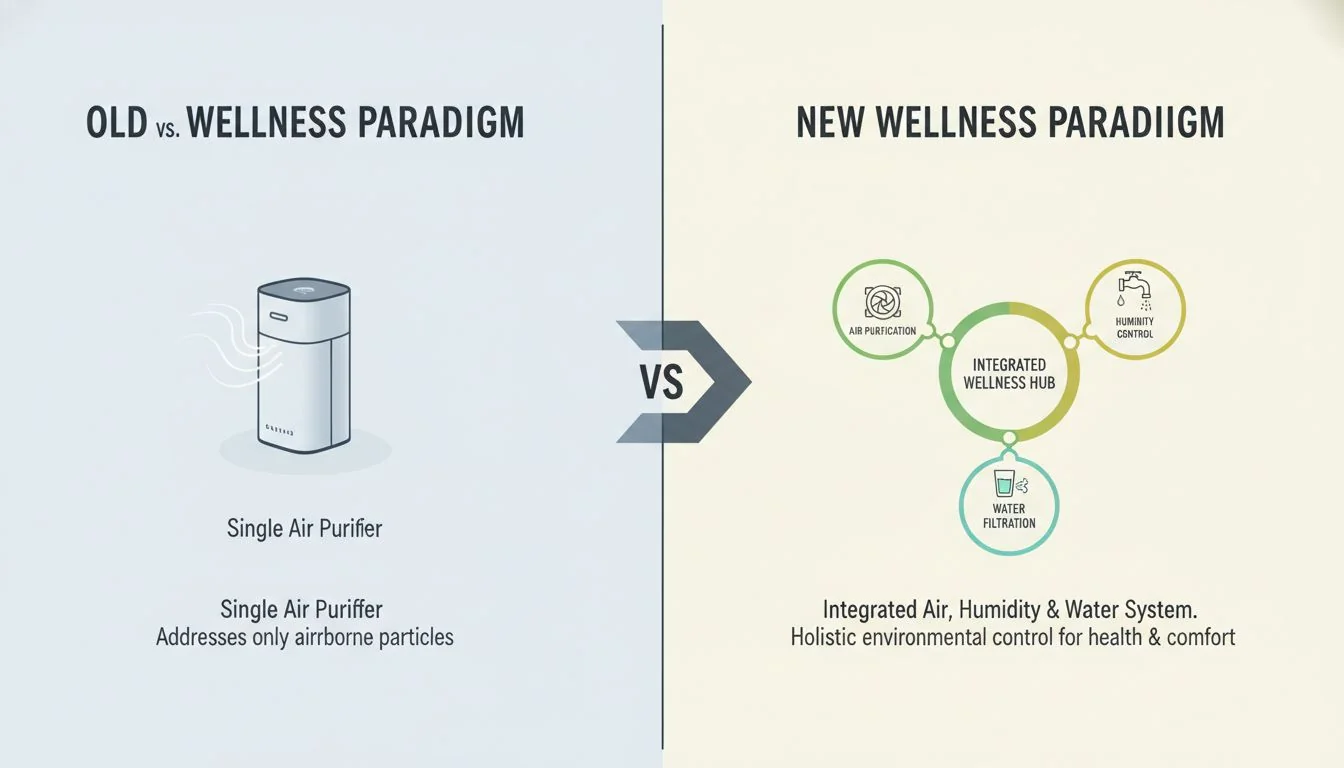
I see this shift firsthand with the clients I work with. A few years ago, a brand would come to me asking for help designing and manufacturing a housing for an air purifier. That was it. Now, they come asking for a "family" of products. They want an air purifier, a humidifier, and sometimes even a water filter that all share the same design language. They understand that the customer wants a cohesive system, not a random collection of appliances. This is a fundamental change from a product-level request to a system-level one. For you as a designer, this means your job is no longer just to make one attractive box. Your challenge is to create an entire ecosystem that feels unified.
The Old vs. New Wellness Paradigm
| Caratteristica | Old Paradigm | New Paradigm |
|---|---|---|
| Product Type | Standalone Device (e.g., Air Purifier) | Integrated System (Air + Humidity + Water) |
| Core Focus | Particle Filtration (PM2.5, VOCs) | Holistic Environment (Particles, RH%, Water TDS) |
| Posizione di mercato | Functional Appliance | Wellness Lifestyle Object |
| User Interaction | On/Off, Manual Settings | Smart, Automated, App-Controlled |
Low indoor humidity can increase the transmission of airborne viruses.Vero
Studies, including one published in the Annual Review of Virology, have shown that maintaining indoor relative humidity between 40% and 60% can reduce the survival and transmission of viruses like influenza.
Air purifiers are most effective when indoor humidity is below 20%.Falso
Extremely low humidity can sometimes make particles more likely to stay airborne, but the effectiveness of a HEPA filter itself is not directly dependent on a specific low humidity level. In fact, balanced humidity is better for overall respiratory health.
Why Is Plastic the Weak Link in Most Humidifiers?
You're designing a new humidifier, and the default choice is a plastic water tank. It's cheap and easy to mold. But what about the hidden risks of bacteria and cleaning nightmares?
Plastic tanks are porous and can develop micro-scratches, making them breeding grounds for biofilm2 and bacteria. This compromises the very wellness the device promises. Stainless steel offers a hygienic, durable, and premium alternative that solves this fundamental design flaw.

This is where my experience in materials and manufacturing becomes critical. Many brands focus only on the upfront cost and ease of molding plastic. They forget about the user's experience over the product's lifetime. A plastic tank might look fine on day one, but after a few weeks, a slimy layer called biofilm can start to grow. It’s nearly impossible to clean completely from the corners and pores of the plastic. The humidifier then ends up spraying this contaminated mist into the air. As a designer, choosing a better material is one of the most impactful decisions you can make. It elevates the product from a potential health risk to a true wellness tool.
Material Matters: Plastic vs. Stainless Steel
-
The Problem with Plastic
- Porous Surface: Microscopic pores and scratches become a perfect home for bacteria and mold.
- Difficult to Clean: You can't use high heat or harsh abrasives without damaging the plastic or causing it to leach chemicals.
- Perceived Value: It feels cheap and disposable, which contradicts a premium wellness positioning.
-
The Advantage of Stainless Steel
- Hygienic: The non-porous surface resists biofilm growth and is incredibly easy to wipe clean.
- Durable & Heat-Resistant: It can be sterilized with boiling water or steam, like the technology used in HisoAir’s "Stainless Steam Humidifier" that achieves 99.99% sterilization.
- Premium Feel: The weight, finish, and durability of steel immediately signal a high-quality, long-lasting product.
Biofilm can form on plastic surfaces in humidifiers within 24-48 hours.Vero
Under the right conditions of moisture and temperature, bacteria can begin to colonize and form a protective biofilm matrix on plastic surfaces very quickly.
All plastics used in humidifiers leach harmful BPAs into the water.Falso
While some plastics can leach chemicals, many modern appliances use BPA-free plastics. However, the issue of porosity and biofilm growth remains a challenge for plastic materials regardless of their BPA content.
How Can Separate Devices Create a Single, Smart Wellness Experience?
You have an air purifier, a humidifier, and a water filter. They all work fine on their own, but they don't work together. They are dumb, siloed appliances in a smart home world.
Integration is the key. The next wave of wellness products will use shared sensors and connectivity to work as a single, intelligent system. An air purifier detecting dry air can automatically activate a humidifier, creating a responsive, data-driven environment for the user.

Think of it as building a "wellness stack" for the home. This isn't just a marketing gimmick; it's about creating a genuinely better user experience3. Instead of the user having to check three different devices and guess at the right settings, the system does the thinking for them. This is what turns a collection of products into a true solution. As a designer, your focus expands from the physical object to the entire user journey, including how the devices communicate with each other and present information through a unified app. This system-level thinking is what will set leading brands apart.
Building the Home Wellness Stack
-
Layer 1: purificazione dell'aria4 (The Foundation)
- This is the base layer, constantly monitoring for particles (PM2.5), VOCs, and other pollutants. It's also the "brain" that senses other environmental conditions.
-
Layer 2: humidity control5 (The Environment Manager)
- When the air purifier's sensor detects low relative humidity (e.g., below 40%), it signals the humidifier to activate. The humidifier works to bring the room to the optimal 40-60% RH range.
-
Layer 3: Water Purity (The Source)
- The humidifier draws its water from an under-sink Reverse Osmosis (RO) system. This ensures the mist being added to the air is free from minerals and contaminants, preventing white dust and ensuring the system is truly clean.
This integrated approach, enabled by a portfolio like HisoAir's, creates a seamless, automated experience.
A unified app controlling multiple wellness devices improves user engagement and satisfaction.Vero
UX research consistently shows that users prefer a single, well-designed app to manage an ecosystem of smart devices over having to switch between multiple, disparate apps.
Bluetooth is the only technology that can connect multiple smart home devices.Falso
While Bluetooth (especially Bluetooth Mesh) is a common option, other protocols like Wi-Fi, Zigbee, and Thread are also widely used to create interconnected smart home ecosystems.
How Do You Turn a Functional Appliance into a Desirable Lifestyle Object?
Your product performs perfectly, but it looks like a generic plastic box. It gets hidden in the corner of the room, an ugly but necessary appliance that clashes with the user's decor.
Through deliberate design choices in CMF (Color, Material, Finish) and user interface. A premium wellness device must not only work well but also look and feel like it belongs in a modern, high-design interior. It should be an object of pride.
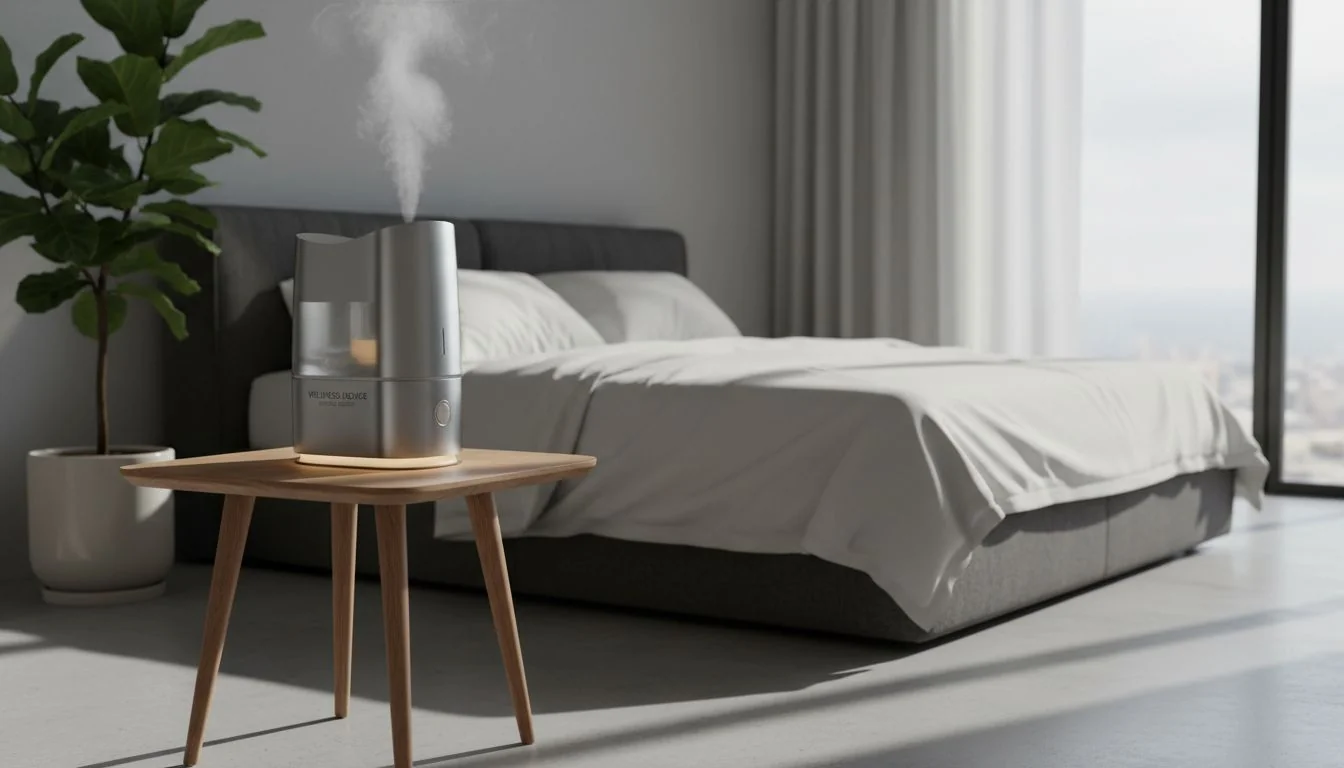
I've seen so many great technologies fail because they were packaged in a thoughtless, ugly enclosure. People care about how their home looks and feels. A product that is going to sit in their living room or bedroom needs to be beautiful. This is where you, the designer, become the most valuable player. Your choices in materials and finishes can transform a product's perceived value. Imagine a client, let's call them "Aura Wellness," wants to launch a premium humidifier. By guiding them to use a brushed stainless steel body, a minimalist OLED display, and a simple, satisfying control knob, we instantly create a product that feels ten times more valuable than a plastic competitor, even if the core technology is similar.
The CMF of Premium Wellness
- Color: Move away from basic appliance white. Think about sophisticated, muted palettes that complement modern interior design trends—charcoal grays, warm metallics, and soft earth tones.
- Material: This is your biggest opportunity. The choice of stainless steel over plastic is a statement. It communicates durability, hygiene, and quality. You can also explore accents like real wood, fabric wraps, or frosted glass to add texture and warmth.
- Finish: The finish is just as important as the material itself. A brushed stainless steel finish hides fingerprints and gives a soft, architectural look. A matte finish on plastic parts can make them feel more premium and less toy-like.
The goal is to create something people are proud to display, not something they want to hide.
Products with superior industrial design and materials can command a higher price point and achieve higher profit margins.Vero
Numerous case studies, from Apple to Dyson, demonstrate that consumers are willing to pay a premium for products that offer a superior aesthetic, tactile experience, and build quality.
Consumers do not care about the appearance of functional appliances like humidifiers.Falso
With the rise of design-conscious consumers and open-plan living spaces, the aesthetic appeal of all home objects, including functional appliances, has become a significant purchasing factor.
What Turns a Smart Home into a Smart Wellness Home?
Your device has an app, but it's just a remote control. It doesn't offer real insights or connect with anything else. It's "smart" in name only, a missed opportunity for true innovation.
Vero smart wellness6 comes from the convergence of sensors, connectivity, and hygiene. Devices collect environmental data, share it within an ecosystem, and provide users with actionable insights to proactively manage their health and environment, not just react to problems.

The first wave of smart devices was all about remote control. The next wave is about data and intelligence. A truly smart wellness system doesn't just let you turn it on from your phone; it tells you why you should. It shows you trends over time, like how the air quality changes when you cook, or how humidity drops at night. For a designer, this means you need to plan for the right sensors from the very beginning. It's not just about the physical form anymore; it's about the data the product can generate and how that data is presented to the user in a meaningful way.
The Pillars of Smart Wellness
- Sensors (The Senses): The system needs to "see" the environment. This means including sensors for PM2.5, VOCs, temperature, and relative humidity in the air products. For water systems, it means TDS sensors and filter life monitors.
- Connectivity (The Nervous System): Devices must talk to each other and to the cloud. This enables automations and, crucially, Over-the-Air (OTA) updates. A product with OTA can get new features and improve long after it's been purchased, which is a huge value-add.
- Data & Insights (The Brain): The system collects the data and turns it into simple, actionable advice for the user. For example: "Air quality is poor. Closing windows and increasing purification is recommended." or "Your humidifier's filter is at 10% life. Order a new one?"
Partnering with an OEM that provides a pre-engineered and connected core lets you build these advanced features into your product without having to become an expert in firmware and cloud infrastructure.
Over-the-Air (OTA) updates can increase the long-term value and lifespan of a smart device.Vero
OTA updates allow manufacturers to fix bugs, patch security vulnerabilities, and add new features to products after they have been sold, enhancing the user experience and extending the product's relevance.
All smart devices automatically collect and sell user's personal data.Falso
While data privacy is a major concern, reputable brands have clear privacy policies. Data collected is often anonymized and used to improve product performance, not sold to third parties without consent. Designing for privacy is a key part of building user trust.
How Can Your Brand Quickly Enter the High-Margin Wellness Tech Market?
You see the massive opportunity in wellness tech, but the R&D costs, manufacturing complexity, compliance hurdles, and long timelines are daunting. You risk being too late to the market.
By partnering with a platform-based OEM7. This model allows you to leverage a pre-engineered, pre-certified core system—the "guts" of the product—and focus your resources on designing a unique external housing, CMF, and user experience that defines your brand.

This is the smartest way to play the game, and it's how I've helped many of my clients launch successful products. Trying to develop everything from scratch—the electronics, the firmware, the sterilization technology, the sensor integrations—is incredibly slow and expensive. You don't need to reinvent the wheel. A platform OEM partner, like HisoAir, has already done the hard engineering. They provide a proven, certified core. Your job, as the brand and designer, is to give it a soul. You create the beautiful exterior, you define the user experience, and you build the brand story. This model lets you move fast, reduce risk, and focus on what you do best: creating products that people love and want to buy.
The Platform OEM Advantage
| Your Brand Focuses On: | The OEM Partner Provides: |
|---|---|
| Industrial Design & CMF | Core Technology (e.g., Steam Sterilization) |
| Brand Story & Marketing | Sensor Suite & Connectivity (Wi-Fi/BT) |
| User Experience (App UI/UX) | Pre-Certified Electronics & Firmware |
| Packaging & Go-to-Market | Manufacturing, Quality Control & Compliance (UL, ETL, CE) |
A premium stainless steel humidifier is the perfect hero product to launch using this strategy. It has a clear value proposition, a high-margin potential, and allows for beautiful, differentiated design.
Using a platform OEM model can reduce a product's time-to-market by over 50%.Vero
By eliminating the lengthy R&D, prototyping, and certification phases for the core technology, brands can move from design to production much faster compared to a traditional ground-up development process.
All OEM partners offer the same level of quality and support.Falso
The quality, expertise, and reliability of OEM partners vary dramatically. It is crucial to vet partners based on their engineering capabilities, manufacturing standards, track record, and understanding of compliance.
Conclusione
This integrated approach, from air to water, is the future. By focusing on premium materials8, smart integration, and strategic OEM partnerships, your brand can lead this new wave of home wellness.
References
-
Understanding integrated systems can help you design products that meet modern consumer demands for holistic wellness. ↩
-
Explore the implications of biofilm in humidifiers to improve product safety and hygiene. ↩
-
Learn how to enhance user experience to increase customer satisfaction and loyalty. ↩
-
Explore the benefits of air purification to enhance your product offerings and meet consumer expectations. ↩
-
Learn about the significance of humidity control in creating a comfortable and healthy living environment. ↩
-
Understanding smart wellness can guide you in creating interconnected devices that enhance user experience. ↩
-
Understanding this model can help you streamline your product development process and reduce time-to-market. ↩
-
Explore how premium materials can elevate your product's perceived value and marketability. ↩



